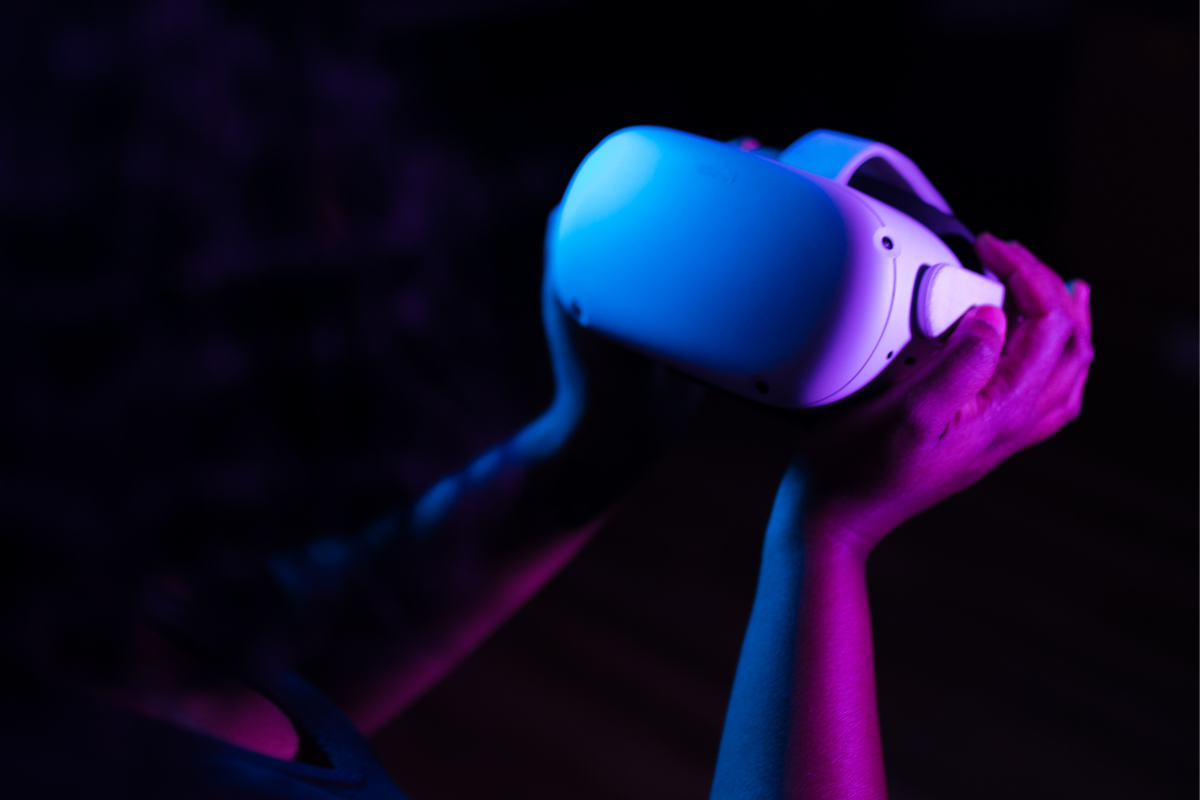In her latest audio blog, our president and CEO shares the latest trend in retail tech.
Transcript of “Spatial Computing” audio blog:
Hello! It’s been a minute since we’ve recorded one of our KG audio blogs, but I am glad to be back and excited you have joined me today! I’m Catherine Seeds, president and CEO of Ketner Group.
Today, we are taking a closer look at the exciting world of spatial computing.
Before we dig in to see how retailers and brands are using this technology, let’s level set on what exactly it is.
According to the very smart folks at PC Magazine, spatial computing is a technology that enables computers to blend in with the physical world in a natural and seamless way. Not to be confused with a similar technology, augmented reality, which is a digital layer that augments reality by laying on top of it.
To explain further, TechTarget defines spatial computing as a technology that “mirrors how we interact with virtual objects in the real world. For a human using spatial computing, the technology would ‘translate the two-dimensional images that they see into a 3D model of the world, make sense of objects in the world and then direct their hands to act.’”
The potential for spatial computing in retail is significant, especially with the launch of Apple’s Vision Pro and the forthcoming Google Glass. According to Brainy Insights, the U.S. market size for spatial computing will grow from 108.9 billion in 2023 to 815.2 billion by 2033.
To further my point, McKinsey named immersive-reality technologies one of the top technology trends of the year, estimating that the “metaverse could generate up to $4 trillion to $5 trillion in value across consumer and enterprise use cases by 2030.”
So, let’s dive in and explore a few use cases on this amazing technology.
A new vehicle for product discovery and shopper interaction
In February of this year, e.l.f. Cosmetics announced one of the first beauty shopping apps for Apple Vision Pro, aptly named “your best e.l.f.” The app was created in partnership with the brilliant team at Obsess. In their blog discussing the project with e.l.f., Obsess describes the app as a way for shoppers to deepen their relationship with the brand through immersive exploration and branded games.
In the visionOS shopping app, users can participate in activities like guided meditations, stretching exercises and a “Paint by Numbers” game. With spatial computing, users can also “unwind and explore the best versions of themselves through playful, inspirational environments that contextualize an assortment of 3D e.l.f. products.”
Changing the game for all things virtual
Another first in the industry is J.Crew’s virtual closet app on Apple Vision Pro. Also powered by spatial computing, the app is an immersive shopping platform (see the trend here?) which gives shoppers the opportunity to shop J.Crew products in a 3D environment. With the app, users can:
- Use intuitive hand and eye movements to browse a selection of J.Crew items
- Mix and match pieces to create an ideal outfit for any occasion
- See how the outfits look on their personal in-app mannequin.
What is even more amazing about the app is the SharePlay FaceTime feature, which again, allows for shared experiences for a shopper. The app uses a digital twin of a person, complete with subtle facial expressions and gestures, that allow them to do 1:1 video calls with a J.Crew expert stylist or group video chats with friends and family to get feedback in real time!
According to Halsey Anderson, VP of Marketing at J.Crew. “We’re particularly excited for our J.Crew stylists to use Apple Vision Pro to work with customers in a more dynamic way than ever before, via SharePlay in FaceTime. This incredible technology, combined with our rich brand heritage of best-in-class service, will provide endless styling capabilities.”
Ready to go shopping, anyone?
No turning back when it comes to immersive technologies
For those of us earning our living in the world of retail, we know that as technology evolves, so do the expectations and shopping behaviors of consumers. Just like mobile commerce or the online shopping beast that is Amazon has quickly become a part of the retail zeitgeist, so too will spatial computing.
The possibilities for this immersive technology are endless. I mean, check out what the team at Augmodo is doing in the grocery space! With spatial computing, they can
create a 3D “Realogram” for each store, aka, a digital twin or map of that store, and everything in it.
As the team at Combeenation puts it, spatial computing “could become a mass phenomenon and fundamentally change the way we shop.” Personally, I’m excited to see which retailers and brands step up to the plate next. All the data and experts tell us that spatial computing is here to stay, and I agree!
Thanks for joining me today. Let’s keep the conversation going!
Get in touch today to find out how our retail expertise can help drive brand awareness and support your marketing goals.

